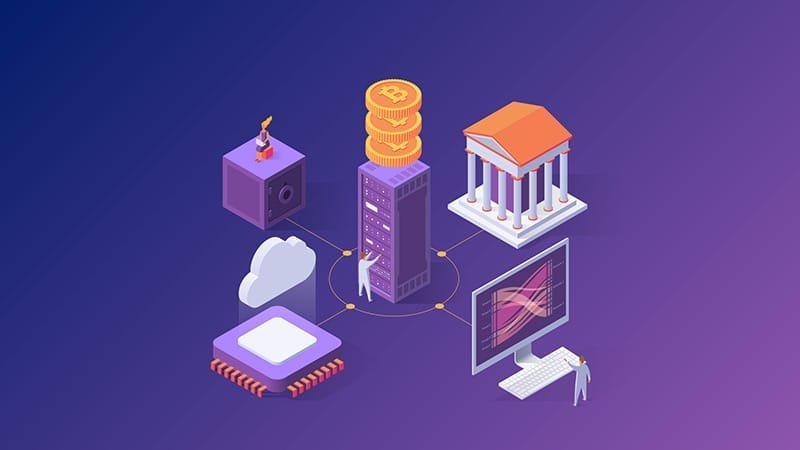By Terry Ashton, updated January 10, 2025
The blockchain revolution has introduced groundbreaking advancements to the financial world, offering decentralized and secure transactions. Yet, as cryptocurrency adoption grows, the challenges of scalability, high fees, and slow transaction speeds have surfaced as significant roadblocks. Enter Layer-2 solutions—a cutting-edge approach to overcoming these limitations, Layer-2 enhances blockchain scalability, providing faster and more cost-effective blockchain transactions.
Understanding Layer-2 Solutions
Layer-2 solutions build on primary blockchain networks, often called Layer-1 chains, as innovative technologies. Instead of modifying the underlying blockchain itself, Layer-2 enhances blockchain scalability by functioning as an additional layer, processing transactions independently while maintaining the security of the main chain.
Popular Layer-1 chains like Bitcoin and Ethereum face congestion issues during peak activity periods, leading to high fees and delays. Layer-2 solutions address these bottlenecks by handling the bulk of transactions off-chain, reducing strain on the primary network.
Why Blockchain Needs Layer-2
Blockchains are known for their security and decentralization, but these features often limit scalability. For instance, Ethereum processes only approximately 15–30 transactions per second (TPS), much slower than traditional payment networks like Visa, which can handle thousands of TPS.
As the number of blockchain users rises, congestion leads to slower transactions and skyrocketing fees. Layer-2 solutions provide an answer by:
- Speeding Up Transactions: Off-chain processing drastically reduces transaction confirmation times.
- Cutting Costs: Fewer computational resources are required, significantly lowering transaction fees.
- Enhancing Scalability: By increasing the volume of transactions a blockchain can handle, Layer-2 ensures networks can scale alongside user demand.
Types of Layer-2 Solutions
Layer-2 technology encompasses various approaches, each tailored to specific needs. Below are some widely used Layer-2 solutions:
- State Channels
State channels create private communication pathways between participants, allowing multiple transactions to occur off-chain. The system records the results on the blockchain in a single update. The Lightning Network for Bitcoin and Raiden Network for Ethereum are prominent examples. - Sidechains
Sidechains are independent blockchain networks linked to the main chain via bridges. Assets can move back and forth between the main chain and sidechain, enabling seamless operations. Polygon, a leading solution for Ethereum, exemplifies the power of sidechains. - Rollups
Rollups condense multiple transactions into a single batch for off-chain processing, while the final outcome is added to the main chain. Two types of rollups exist:- Optimistic Rollups: Assume transactions are valid unless challenged, requiring less computational power.
- Zero-Knowledge (ZK) Rollups: Use cryptographic proofs for instant validation.
These approaches are particularly beneficial for scaling decentralized applications (dApps).
- Plasma
Plasma chains operate as smaller “child” blockchains connected to the main chain. They handle transactions independently but anchor their security to the primary network, ensuring a balance of speed and reliability.
Practical Applications of Layer-2
Layer-2 solutions are transforming various sectors, demonstrating their versatility and potential:
- Decentralized Finance (DeFi)
DeFi applications rely on fast, low-cost transactions for trading, lending, and liquidity provision. Platforms like Optimism and Arbitrum have become essential tools for scaling Ethereum-based DeFi ecosystems. - NFTs and Gaming
The NFT and gaming industries require quick and affordable transactions to thrive. Solutions like Immutable X cater to these needs, offering seamless user experiences with minimal fees. - Micropayments
From tipping content creators to enabling small-scale transactions, Layer-2 solutions make micropayments more practical by eliminating high fees.
Challenges Facing Layer-2
Despite their promise, Layer-2 technologies face certain challenges. User adoption can be hindered by the complexity of integrating these solutions into existing blockchain systems. Additionally, interoperability between different Layer-2 implementations remains a work in progress.
However, the industry continues to evolve. Efforts to streamline integration and enhance compatibility are paving the way for widespread Layer-2 adoption. Combined with advancements like Ethereum’s transition to proof-of-stake (PoS), these solutions are driving the blockchain sector toward a more sustainable future. Layer-2 enhances blockchain scalability, making it a key factor in this progress.
The Road Ahead
Layer-2 solutions represent a pivotal step in overcoming the scalability issues that have long plagued blockchain networks. By offering faster, cheaper, and more efficient transactions, they enable blockchains to support global adoption without compromising on security or decentralization.
As Layer-2 technologies continue to mature, their role in the broader blockchain ecosystem will become increasingly significant. From DeFi and gaming to everyday financial transactions, Layer-2 solutions are setting the stage for a future where cryptocurrency is both accessible and practical for everyone. Layer-2 enhances blockchain scalability, enabling this transition to a more efficient and widely adopted system.
